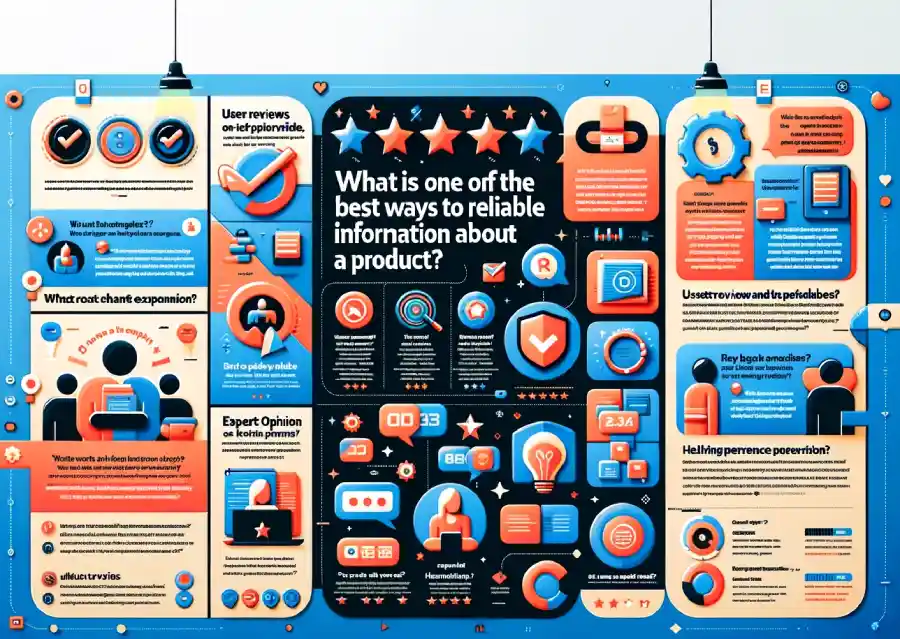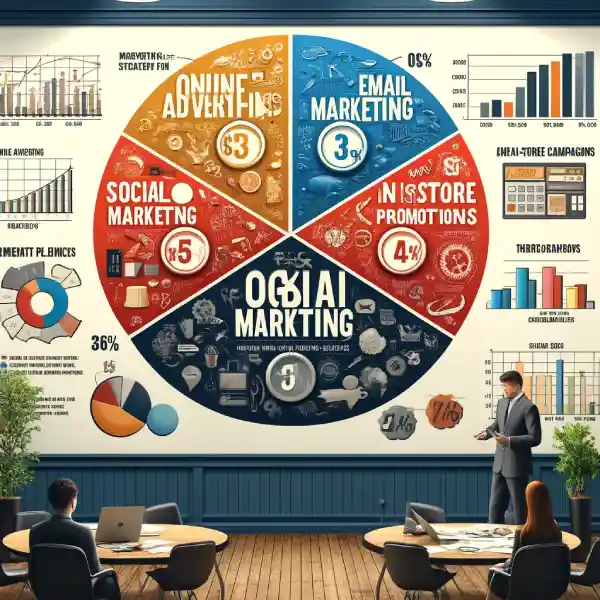
In the world of luxury, consumer expectations are higher than ever before. Wealthy consumers demand an omnichannel experience that is seamless whether they engage with a brand on mobile, online, or in a boutique shop. For luxury brands, building a marketing plan that brings together every channel isn’t just a trend – it’s a must.
Herein, we consider why an omnichannel marketing strategy for luxury brands matters. By complying with these instructions, you’ll be able to develop a plan that delivers a consistent, personalized experience across all digital interfaces and in-shop moments for your high-end customers.
What is a Seamless Omnichannel Marketing Strategy for Luxury Brands?
Omnichannel marketing strategy is when consumers have a unified, integrated experience in online and offline channels. “Omnichannel” is the term we use to describe each of the platforms as being harmonious. If you’re a customer browsing your website, scrolling social media, or shopping at your flagship store, the message and the experience are one.
That translates to your tone, look, and values everywhere being consistent. For example, a customer might see a new product on your UAE-based brand’s social media platform that your social media marketing agency in Dubai produced and then see it in the store – with both feeling natural and in line with your brand.
The objective is to eliminate barriers: the customer can seamlessly move from an online touchpoint to a physical visit with no interruption or issue. For prestige brands, a seamless strategy on all channels also instills a sense of exclusivity and excellent care.
Luxury consumers must feel the luxury narrative of the brand and first-rate service at each touchpoint. This encompasses a brand narrative that runs through all touchpoints – from an elegant website to friendly in-store assistance.
Why is an Omnichannel Marketing Strategy for Luxury Brands Essential?
Luxury consumer behavior requires an omnichannel approach. Luxury consumers will shop online, engage via social media, and shop in-store (and vice versa). They must be given the same service and personalization on a site or app as they would in a boutique. If messaging or the level of service quality for a brand on any one of the channels is inconsistent, it can start to undermine customer trust.
There is a strong necessity for luxury brands to become omnichannel in today’s market. For since 2020, digital conversation has influenced almost every purchasing decision. Your luxury, high-end customer requires a brand to converse with them in the way they most want to communicate. If you’re unable to offer transparency and consistency in an area where your competition is performing exceptionally well, then you’re going to lose a quality customer.
All of these high-end shops need to utilize professional agencies, making sure they implement their strategy to the finest detail. An example would be a firm with Middle Eastern customers as their target market could use a digital marketing agency in UAE, making sure their offline as well as online campaigns are made attractive to local culture as well as the aesthetic sensibilities of affluent high-end buyers.
Who Are You Targeting and Who Is Involved?
An omnichannel marketing strategy always starts with those you are attempting to reach – in this instance, luxury shoppers. This high-end audience is generally sophisticated, tech-oriented, and used to high standards of service. They anticipate personalization at each step. Consider a VIP customer whose tastes are understood whether they’re shopping on your app or conversing with a sales associate.
Today’s luxury customers tend to switch between channels easily: perhaps they begin browsing your Instagram lookbook, follow that up by checking out reviews on your website, and eventually pick up the product in a physical store. To be sure, the average customer touches about six different channels per purchase process. These kinds of customers respect a brand that is able to know them throughout various platforms.
Marketing promotions should be fed back into in-store promotions, and customer feedback should be returned to the digital team by in-store staff. Outside partners are also brought in by many luxury brands to obtain a completely seamless solution. This is when luxury brand businesses in UAE can leverage a digital marketing company in Dubai for added expertise. The agency’s experience in social media marketing and curating your brand’s narrative on social channels, keeps it even everywhere.
Likewise, to refine your online presence for search engines, consulting an SEO consultant in Dubai can be valuable if you’re targeting that region’s affluent market. These experts understand how to maintain luxury branding while optimizing digital content. In summary, your omnichannel marketing strategy for luxury brands targets high-end customers, and it requires an aligned effort by all teams (and sometimes external agencies) to execute flawlessly.
How to Create a Seamless Omnichannel Marketing Strategy for Luxury Brands
Developing an omni-channel strategy for a luxury brand takes some significant steps. Do these, and you have a cohesive plan in place. Here’s how to do it:
Understand Your Luxury Customer
Start with facts and research. Chart out your luxury customer’s preferences and entire customer experience. Determine how they usually find, research, and buy luxury items.
For instance, do they blog, utilize certain social apps, or attend invitation-only client events? Leverage surveys, buying history, and sales associate feedback to see what your customers need.
Based on that, you can customize each channel according to their requirements. Having knowledge of their path (e.g., discovering a product online, then purchasing it in-store) helps you align your strategy to real behavior.
Maintain Consistent Brand Storytelling Across Channels
Make sure your brand voice, visual identity, and values are consistent wherever you pop up. Luxury branding is about telling a story and feeling emotionally connected. That refined story your customer glimpses in a print ad or on your website must carry over your Instagram feed and in your store design. Consistency breeds trust and familiarity.
Create concise brand guides and get them into place for all platforms. By presenting one unified narrative, you make the customer experience the same amount of luxury at every touchpoint, reinforcing your brand’s personality in their mind.
Integrate Your Channels and Data
Eliminate silos between online and offline processes. Invest in technology that connects your e-commerce, CRM (Customer Relationship Management), and in-store POS (Point of Sale) systems. This integration is what renders an experience truly omnichannel. It enables a situation like: a customer puts an item into an online cart, and when they enter the store, employees can see that item and inquire if they would like to try it on.
To do this, make sure inventory is in real-time sync across channels (avoiding, for instance, a scenario where a product appears “in stock” on the web but is out of stock in the store). Similarly, have one customer database – so purchase history and preferences travel with the customer from web to store to customer service.
The end result is one, 360-degree view of the customer. Rolling out the correct tech is complicated, so a few high-end retailers team up with veteran teams to make it happen. An experienced digital marketing agency in UAE with omnichannel knowledge, for example, can help establish the infrastructure and strategies necessary to link all your digital and physical channels seamlessly.
Personalize the Omnichannel Experience
Treat the data you collect to personalize each interaction based on the individual. Personalization is the bedrock of luxury service – consider a boutique staffer who remembers a customer’s previous buys and fashion tastes. You want to achieve that personal touch in all digital channels too.
On the social media platform or website, display content and products that correlate with the behavior of the customer. In stores, give the sales team tablets or client cards so that they can provide expert, customized advice.
If necessary, collaborate with experts to do so at a high level – i.e., work with a social media marketing agency in UAE that understands how to implement personalization technology to high-end audiences. The aim is to make each customer feel that the experience was personally tailored for them, whether using a phone or a flagship store.
Measure Performance and Refine Continuously
An omnichannel approach isn’t “set and forget.” It needs constant monitoring and tweaking. Set key metrics for each channel and as a whole. These might be customer satisfaction scores, online vs. in-store conversion rates, average order value, or social media engagement rates. Monitor how customers flow through channels – for example, what percentage of online leads become store visits or how a social media campaign converts to sales.
Customer feedback is gold: leverage surveys and reviews to see where the experience falls short. Be prepared to evolve. Perhaps you find your high-end audience gravitates toward a new platform – you may incorporate that into your plan.
Empower Your Team and Leverage Expert Support
Even the best plan will fail if those implementing it are not ready. Educate your employees on the value of omnichannel customer service. All customer-facing employees – from sales assistants to social media managers to customer service agents – should be aware of your brand’s expectations and be trained in how to leverage the tools that bridge channels.
High-end brands usually take recommendations from expert partners to hasten their omnichannel triumph. Don’t shy away from seeking the assistance of a reputable SEO agency in Dubai or an exclusive omnichannel consultant if you’re marketing in a niche area or require auditing your strategy. They can provide tips on local behavior, optimize regional search for your online content, or recommend platform adjustments you may not know about.
Conclusion
A unified omnichannel luxury marketing strategy ties it all together – your story, your audience, your channels, and your people – to forge one seamless luxury customer experience. By knowing where your customers expect to be and meeting them there, you develop deeper relationships.
The return is greater loyalty, higher engagement, and more sales, all while maintaining the integrity of your brand. Keep in mind that consistency and personalization are what create trust – currency that’s priceless in the luxury space. Whether the client is communicating through a screen or sitting in a salon, they must experience the same exclusivity and attention.



